Santa Rosa Plum Tree
Description
About The Santa Rosa Plum Tree
A favorite of home gardeners and farmers’ markets, the Santa Rosa plum, was introduced in 1906 by famed horticulturalist, Luther Burbank, out of his home in Santa Rosa, California.
It is known for its sweet, slightly tart taste, and deep purple red color. This variety typically takes less years to begin bearing fruit than other plums. Commercial fruit production of the Santa Rosa plum is rare.
This Japanese plum variety makes a stunning ornamental tree with its showy, pinkish white blossoms in the spring.
Using the Fruit
A single tree can produce an abundance of fruit. Home gardeners and homesteaders will enjoy eating the plums fresh or cooking with them. For preservation, plums can be canned, made into jam, or dehydrated into prunes.
The skin of the plum is thin, and its yellow flesh clings tightly to the pit. Plums are good sources of fiber and high in vitamins A, C, and K. Due to its dark red coloring, the Santa Rosa plum is high in the antioxidants known as anthocyanins.
Growing Santa Rosa Plum Trees
These fruit trees need full sun and, in the winter, require 500 chill hours, so be sure to check the USDA hardiness zones to see if it is a good choice for your area.
It is self-pollinating, but cross pollinating with other Japanese varieties will result in greater yield.
Buy a Santa Rosa plum tree and enjoy this beautiful plant and its delicious fruit!
Survival Guaranteed!


Since 1816, Stark Bro’s has promised to provide customers with the very best fruit trees and plants. It’s just that simple. If your trees or plants do not survive, please let us know within one year of delivery. We will send you a free one-time replacement, with a nominal shipping fee of $9.99. If the item in question is not available, we can issue a one-time credit to your account equaling the original product purchase price or issue you a refund. Read more about our warranty policy.
Characteristics
| Bloom Color | Pink, White |
| Bloom Time | Mid - Late |
| Chill Hours | 300 - 500 |
| Fruit Color | Red |
| Fruit Size | Large |
| Hardiness Zone Range | 5 - 9 |
| Pollination | Self-Pollinating |
| Ripens/Harvest | July |
| Shade/Sun | Full Sun |
| Soil Composition | Loamy |
| Soil Moisture | Well Drained |
| Soil pH Level | 6.0 - 7.0 |
| Taste | Sweet |
| Texture | Firm |
| Years to Bear | 3 - 6 |
Size & Spacing
Mature Size
Recommended Spacing
Zone Compatibility
Pollination
This variety is self pollinating.
Tools & Supplies
Planting & Care
Learn all about how to grow plum trees in The Growing Guide. An entire section of our website dedicated to your growing success.
Shipping Information
Estimated Delivery Date
Arrives when it's time to plant
Questions & Answers
You need to prune it properly; too much vegetative growth; check YouTube videos.
Thank you for your question. It really depends upon how "hard" the frost is. A light frost will generally not kill the blooms. If the tree is small enough to cover with a sheet, you can do that; or you can mist the tree with water, which will form a protective coating around the blooms and actually keep them from freezing.
for a spring planting I had growth a couple of weeks after planting. don't expect rapid growth the first year, however.....maybe 6 inches
They have dry, brown lesions on them and then drop all the fruit. What could this be?
sounds like rust disease to me. do you have cedars or pines near by. read up on that
I always buy the dwarf trees. Same size fruit but on a smaller tree. You can tend the tree and pick the fruit without ladders and equipment. Most of it is in reach standing on the ground.
We have not seen butterflies visiting our Santa Rosa plums when they are in bloom, but we do see many other pollinators including honey bees. Butterflies are not usually in our area at the time the Santa Rosa plums bloom; the butterflies arrive later in the season. They are beautiful plants and the fruit is delicious!
I am just outside kansas city. I have 9 year old plumb trees and three year old plumb trees.
My experience is the trees don't produce fruit until year 3. My plumb are also my earliest bloomers and the years we get that hard crazy April weather event I get no fruit.
Methley and Redheart are good choices for red plums; Shiro is an excellent yellow plum that will also work.
Plum trees thrive in well-drained, slightly acidic soil with a pH between 6.0 and 6.8, according to Plant Me Green. They prefer a loamy soil that is rich in organic matter but also well-drained to prevent waterlogging. Plum trees can also tolerate a variety of soils, as long as they are not limiting in water and nutrients and the soil pH is adequate.
It is an early season bloomer as most plums are.
Customer Reviews
Tree arrived in great shape.
I will be ordering more soon

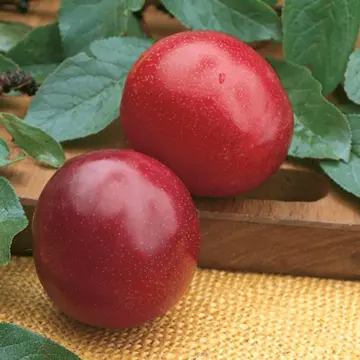
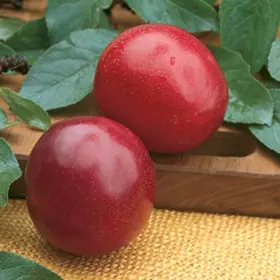
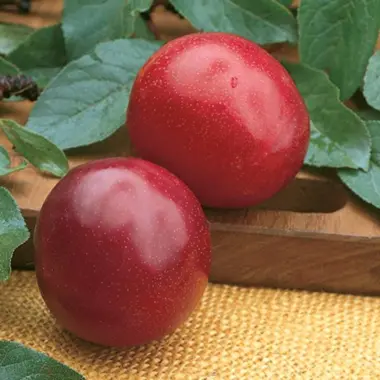
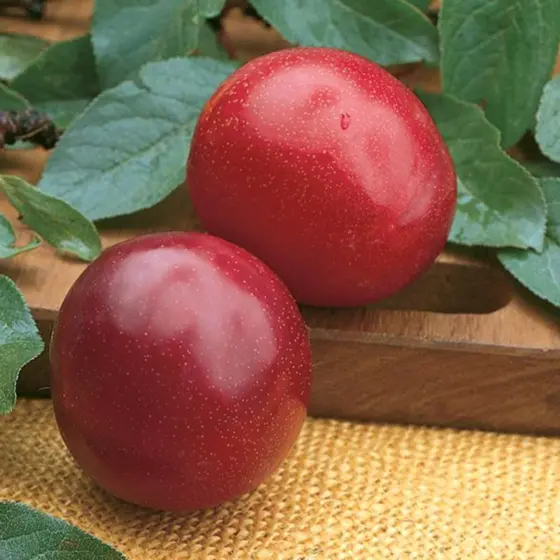
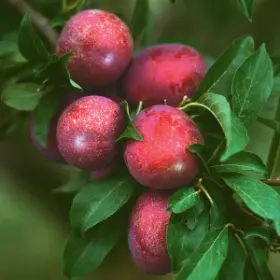
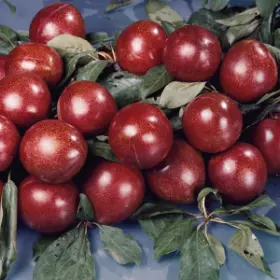
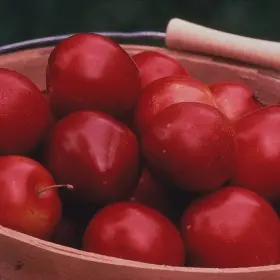
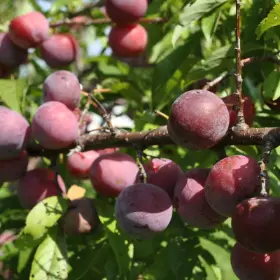
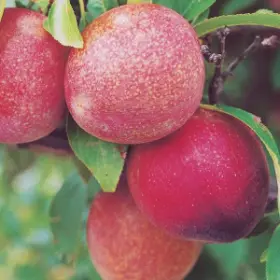
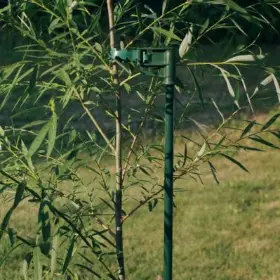
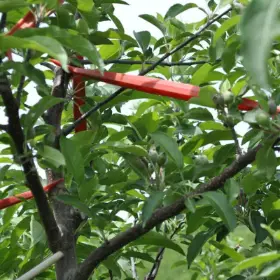
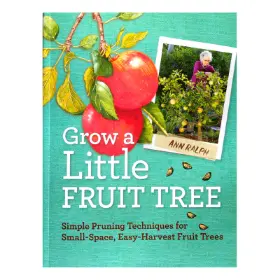
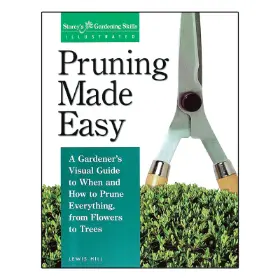






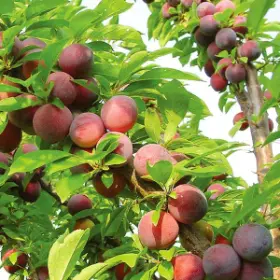
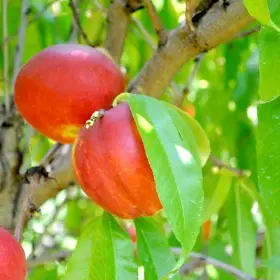
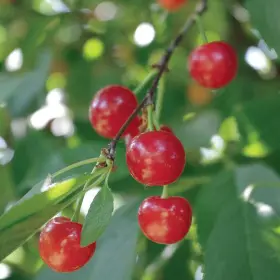
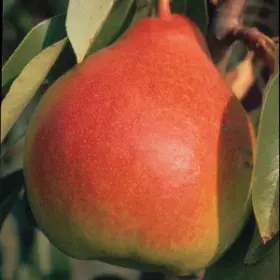
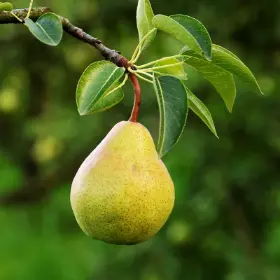
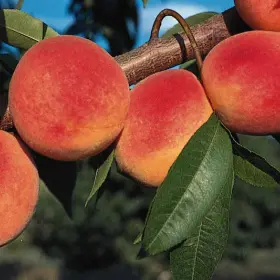
Cross pollinate with my Satsuma Plum Tree.
Was looking for a self pollinating plum tree since I don’t have room for two. Also mid to late blooming is a must for my area.
On sale love plums
Love plums, follow customer reviews